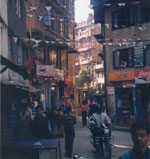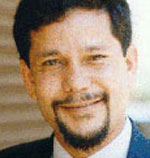
Street scene in Kathmandu
(Photo: www.lilypadfund.org)

FRONT PAGE
About us

The 2010 results
The 2010 project
The 2010 finalists
Code of Ethics
The World Mayor Prize

The 2008 results
The 2008 project
The 2008 finalists
The World Mayor Award

The 2006 results
Methodology
The 2006 finalists
The World Mayor Award

The 2005 results
Contest methodology
List of finalists
The World Mayor Award

Mayor of Athens
Mayor of Guatemala City
Mayor of Mississauga
Mayor of San Fernando
Mayor of San Francisco

Mayor of Athens
Mayor of Guatemala City
Mayor of Mississauga
Mayor of San Fernando
Mayor of Vienna

Comments on finalists from The Americas
Comments on finalists from Europe
Comments on finalists from Asia, Australia and Africa
Comments on Addis Ababa
Comments on Antananariva
Comments on Athens
Comments on Atlanta
Comments on Belo Horizonte
Comments on Bonn
Comments on Guatemala City
Comments on Karachi
Comments on London
Comments on Melbourne
Comments on Mississauga
Comments on Rio de Janeiro
Comments on Rome
Comments on San Fernando
Comments on San Francisco
Comments on Toronto
Comments on Vancouver
Comments on Vienna

Mayor of Addis Ababa
Mayor of Antananarivo
Mayor of Athens
Mayor of Belo Horizonte
Mayor of Bonn
Mayor of Ekaterinburg
Mayor of Guatemala City
Mayor of Innsbruck
Mayor of Karachi
Mayor of Kiev
Mayor of Melbourne
Mayor of Mississauga
Mayor of Munich
Mayor of Rhodes
Mayor of Rome
Mayor of Tshwane
Mayor of Vienna

The 2004 contest
List of all 2004 finalists
Edi Rama wins 2004 award
People ask - Edi Rama replies
Why we voted for the Mayor of Tirana
Why we voted for the Mayor of Mexico City
History of Tirana

Front Page
Site Search
About City Mayors
The City of Kathmandu
Kathmandu emerged as a gateway to Tibet before the Christian era. Originally established in the ninth century, the city has been the capital of a united Nepal for the past two centuries. The city, therefore, stands at the confluence of both past and present. It is important to note the cultural richness of the past and to relate it to present day economics. We intend to preserve Kathmandu’s history, while exploring for it a new future.
Please note: Due to the political and security situation in Nepal, Keshav Sthapit resigned from office. He will, however, remain in the competition World Mayor 2004.
The challenges and vision
Like any major city in the world, Kathmandu has its challenges. A rapidly growing urban population and a changing society continue to put pressure on the city’s natural resources, physical infrastructure and its own management capabilities. We understand these things as opportunities rather than problems. We work as a team, making this city clean, healthy and lively. We are committed to exploring every opportunity and making use of those opportunities to the greatest possible extent for the benefit of the city and its citizens. Our common vision for Kathmandu, determined together with its citizens, is to make it a city which is beautiful, well managed and full of life; a modern city full of opportunities; a city where citizens are proud of their natural and cultural heritage and look forward to a bright future.
The approach
Two major implementation strategies have been put forward: building the confidence of the people and bringing all the stakeholders on board as partners of city building. The key strategies we adopted were a bias for action, the forging of strong links of communication with the people and a proactive stance. Good governance was the foundation. Participation of the people and transparency were the two major tools of development.
The last year
Implementing good governance practices, the Katmandu Metropolitan Council (KMC) introduced open board meetings in the presence of the public media. Live reporting and telecast were allowed to let people know what work the city councillors did, and how they did it. Moreover, public hearings were also introduced in Kathmandu - the first time in Nepal - where people can ask questions on any issue related to the city office. The judicial court was open to everybody. KMC has moved to Baag Durbar, a landmark building of its own. While giving continuity to many ongoing projects, KMC led a campaign on road widening with the participation of the people. Several kilometres of narrow lanes were widened, a task which the central government thought was impossible. The people themselves donated the land for this widening. The Dhobikhola Corridor, an important road project passing through the heart of the city, has been revived.
One of the objectives for this year is the initiation, with several partners, of a project called Squatter-free City. The Urban Poor Support Fund was established under the leadership of Kathmandu. Some 60 houses are already under construction. Encouraged by the successful completion of Nayabazaar Landpooling Project, three land readjustment works have been started with the participation of local people. Air quality monitoring and dissemination of information is being carried out this year with the support of donors and the civil society.
Under the Public Private Partnership Programme, the Rotary Club of Kathmandu will erect 28 bus stops and a private party is constructing 32 public toilets. DHL, the multinational company, is to take charge of a major streetscape improvement. Balaju park upgrading and management is a proposal that also falls within the private sector. To pass on the experiences of Kathmandu to other cities of the country, a Mayors’ workshop was organised last winter. Among the most important initiatives was the drafting of a separate Act for Kathmandu Metropolitan City that grants devolution to several authorities. The Act has been drafted and is in the process of approval. In short, during this year we have been able to change the mind set of people from that of “nothing will happen” to one of “if one tries, everything is possible” so that people now feel that “if KMC commits, they fulfil”.
The future plan
Everything is in place. We are at the point of beginning this ambitious journey, which will include the continuing of unfinished work such as completing the engineering of several infrastructure projects. At the heart of this will be good governance practices, which we intend to enhance. Other projects will include integrated solid waste management with composting, the central meat market project, the Bhugol Park Project, additional housing to help eliminate squatting and improving the tax collection system. Once the Kathmandu Metropolitan City Act is passed, the city will be expanded, both in area and scope. New planning will be based upon the new authorities and their new responsibilities.

Keshav Sthapit, 2004 World Mayor finalist for Asia
Introducing
World Mayor 2006
The World Mayor project is now in its third year. As in 2004 and 2005, this year’s World Mayor will again be seeking out mayors who have the vision, passion and skills to make their cities amazing places to live in, work in and visit. The World Mayor project aims to show what outstanding mayors can achieve and raise their profiles. It honours those who have served their communities well and who have made contributions to the well-being of cities nationally and internationally. The most outstanding mayor of 2006 will be presented with the World Mayor award.
In 2004, Edi Rama, Mayor of Tirana, won the Award. The 2005 winner was Dora Bakoyannis, Mayor of Athens and now Greek Foreign Minister.
Between January and May each year, citizens from across the world are invited to nominate mayors for the World Mayor Award. They are also asked to provide reasons for their choice. After the close of the nomination stage, City Mayors, the organisers of the contest, prepare a shortlist of mayors who go forward to the second round of the World Mayor contest. In 2006, the list of finalists includes 50 mayors from North and South America, Europe, Asia, Australasia as well as Africa.
